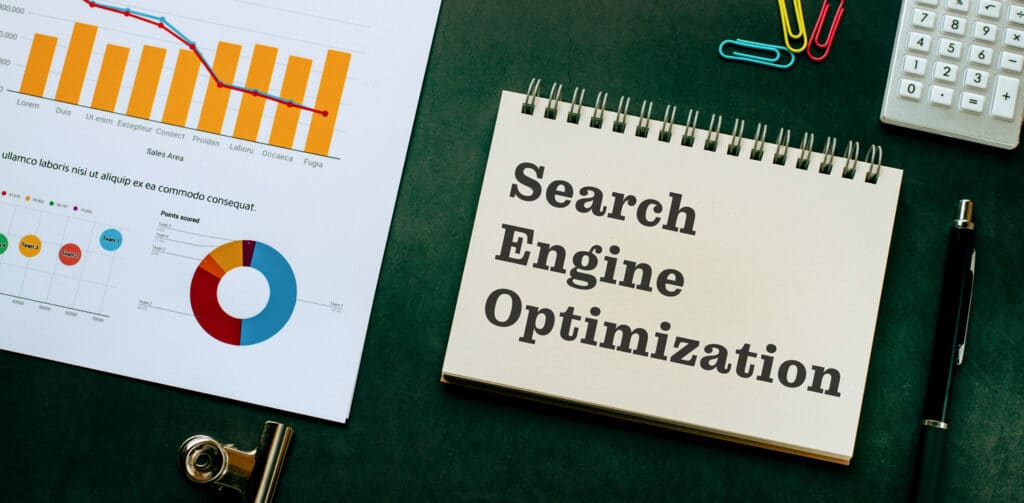SEO & Images - What's in a name?
The importance of describing an image in an alt tag and title for SEO and accessibility
A website’s visibility and user experience play crucial roles in its success. Search engine optimisation (SEO) and accessibility are two fundamental aspects that web builders must prioritise. One often overlooked yet vital component of both SEO and accessibility is the appropriate use of image descriptions, specifically through alt tags and image titles. We’ve picked the brains of our SEO expert to explain why describing an image properly is essential for SEO and accessibility and how doing so can benefit your website.
Understanding Alt Tags and Image Titles
Alt Tags (Alternative Text): Alt tags are text descriptions added to images in HTML. Their primary purpose is to describe the content of the image to those who cannot see it, such as visually impaired users who rely on screen readers. Additionally, alt tags provide information to search engines about the image content, helping with indexing and relevance.
Image Titles: The image title is an attribute that provides supplementary information about an image. Unlike alt tags, image titles are visible when a user hovers over the image. While they are less critical for accessibility, they still offer value in providing context and enhancing user experience.

The Importance of Alt Tags for SEO
Improved search engine indexing
Search engines cannot “see” images; they rely on alt tags to understand what an image represents. Properly described alt tags help search engines index your images correctly, making them more likely to appear in image search results. For instance, Google uses image alt text as a ranking factor, meaning that descriptive alt tags can improve your site’s visibility in search results.
According to Moz, an authority on SEO, alt text helps search engines understand the context of an image and how it relates to the surrounding content. This understanding can improve the overall relevance and ranking of your web pages.
Enhanced user experience
While SEO is crucial, user experience should never be overlooked. Alt tags contribute to a better user experience by providing information when images fail to load. This can happen due to slow connections or technical issues. In such cases, a well-described alt tag ensures that users still understand the image’s content, reducing frustration and bounce rates.
Supporting image SEO strategies
A comprehensive image SEO strategy involves optimising all aspects of an image, including file names, sizes, and alt tags. Alt tags, in particular, can drive traffic from image-based searches. For instance, if your website sells barbecue products and accessories and your images are properly described, potential customers searching for “kamado barbecues with pizza oven” may find your products more easily.
The role of Alt Tags in accessibility
Inclusive web design
Creating an inclusive website means ensuring that all users, regardless of disabilities, can access and interact with your content. Alt tags are crucial for visually impaired users who use screen readers to navigate the web. These readers convert text into speech or Braille, allowing users to understand the content of images through their alt descriptions.
According to the Web Content Accessibility Guidelines (WCAG), providing text alternatives for non-text content is a requirement for making web content more accessible to people with disabilities. This not only includes blind or visually impaired users but also those with cognitive disabilities who benefit from text descriptions.
Legal compliance
In many regions, including the UK, there are legal requirements for website accessibility. The Equality Act 2010 mandates that businesses and organisations make reasonable adjustments to ensure their services are accessible to people with disabilities. Failure to provide alt text for images could be considered a breach of this law, potentially leading to legal consequences.
Crafting effective Alt Tags and Image Titles
To reap the benefits of SEO and accessibility, it’s essential to craft effective alt tags and image titles. Here are some best practices:
Be descriptive but concise
Alt tags should be specific enough to convey the image’s content but concise enough to avoid verbosity. Aim for a balance where the description is clear and to the point. For example, “woman in business wear sat at a computer in an office setting” is more effective than simply “at work.”
Include Relevant Keywords
Incorporating relevant keywords into your alt tags can enhance SEO without resorting to keyword stuffing. For example, if your image is of a product you sell, include the product name and relevant attributes, such as “Kamado barbecue with 21ich removable grill.”
Avoid redundancy
If an image is purely decorative and does not add meaningful content, it may be appropriate to use a null alt attribute (alt=”). This tells screen readers to skip the image, preventing unnecessary repetition and improving the user experience.
Use image titles sparingly
While image titles can add value, they are not as critical as alt tags. Use them to provide additional context or supplementary information that enhances the user’s understanding. For example, if your image is a diagram, the title could offer a brief explanation: “Diagram showing how to build the kamado barbecue.”
Real examples and their impact
Case Study: E-commerce website optimisation
An e-commerce website selling fashion accessories noticed a significant drop in bounce rates and an increase in time spent on the site after optimising their image alt tags. By ensuring that each product image had a detailed and relevant alt description, users could better understand the products, even when images did not load. This not only improved the shopping experience but also led to higher search engine rankings for their products.
Case Study: Enhancing accessibility for a non-profit organisation
A non-profit organisation dedicated to providing educational resources for visually impaired students revamped its website to comply with WCAG standards. By adding descriptive alt tags to all educational images and diagrams, it made its content accessible to a wider audience. This move not only fulfilled its mission of inclusivity but also enhanced its website’s SEO, drawing more traffic and support for its cause.
Describing an image through alt tags and titles is not just a technical requirement; it’s an essential practice for improving SEO and accessibility. By doing so, you enhance the user experience, comply with legal standards, and boost your website’s visibility on search engines. Whether you run an e-commerce site, a blog, or a non-profit organisation, the importance of alt tags cannot be overstated.
For businesses and organisations aiming to optimise their online presence, investing time in crafting effective image descriptions is a small step that can lead to significant benefits. It’s about making your content accessible to everyone and ensuring that your site is easily found by those who need it. In the end, what’s in a name—or, in this case, an alt tag—could be the key to your digital success.
At Peppermint Soda PR, we specialise in helping businesses enhance their digital presence through effective SEO strategies. Contact us today for a no-obligation chat, or why not arrange a meeting with us to catch up over coffee?
Read all about it...
LATEST NEWS

Myths About Working with Journalists and the Realities That Make PR Easier

The Role of PR in the Medical Tourism Industry


